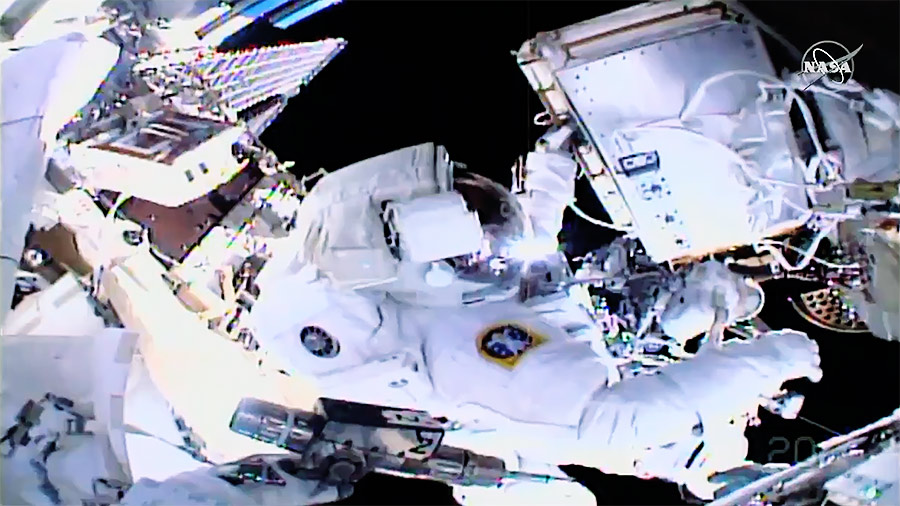
Expedition 61 crew members Andrew Morgan of NASA and Luca Parmitano of ESA (European Space Agency) concluded their spacewalk at 1:20 p.m. EST. During the 6 hour, 16 minute spacewalk, the two astronauts successfully completed leak checks for the cooling system on the Alpha Magnetic Spectrometer (AMS) and opened a valve to being pressurizing the system. Preliminary testing shows AMS is responding as expected.
Ground teams will work over the next several days to fill the new AMS thermal control system with carbon dioxide, allow the system to stabilize, and power on the pumps to verify and optimize their performance. The tracker, one of several detectors on AMS, should be collecting science data again before the end of next week. The upgraded cooling system is expected to support AMS through the lifetime of the space station.
AMS is a joint effort between NASA and the Department of Energy’s Office of Science and is led by Principal Investigator Samuel Ting, a Nobel laureate from the Massachusetts Institute of Technology. The AMS team includes some 600 physicists from 56 institutions in 16 countries from Europe, North America and Asia. AMS has been capturing high-energy cosmic rays to help researchers answer fundamental questions about the nature of antimatter, the unseen “dark matter” that makes up most of the mass in the universe, and the even-more-mysterious dark energy that is speeding up the expansion of the cosmos.
The astronauts also completed an additional task to remove degraded lens filters on two high-definition video cameras.
This was the fourth spacewalk by Morgan and Parmitano to repair the spectrometer and the 227th in support of station assembly, maintenance and upgrades. For Morgan, it was the seventh spacewalk of his career, for a total of 45 hours and 48 minutes, and the sixth for Parmitano, with a total of 33 hours and 9 minutes, who will return to Earth Feb. 6 in a Russian Soyuz spacecraft to complete a six-and-a-half month mission on the outpost. Spacewalkers have now spent a total of 59 days 12 hours and 26 minutes working outside the station. This was also the ninth spacewalk for the Expedition 61 crew, more than in any other increment in the history of the station.
Learn more about space station activities by following @space_station and @ISS_Research on Twitter as well as the ISS Facebook and ISS Instagram accounts.

How did they get to the Cosmic Ray Detector with no Shuttle? Did it move itself to the ISS?
Space Shuttle Discovery delivered the Alpha Magnetic Spectrometer to the International Space Station in May of 2011 during the STS-134 mission.
More info…https://www.nasa.gov/mission_pages/station/research/alpha-magnetic-spectrometer.html
What’s cosmic Ray Detector
The cosmic ray detector on the International Space Station is officially called the Alpha Magnetic Detector. It is searching for evidence of dark matter and antimatter for a fundamental understanding of our universe. More info… https://www.nasa.gov/mission_pages/station/research/alpha-magnetic-spectrometer.html